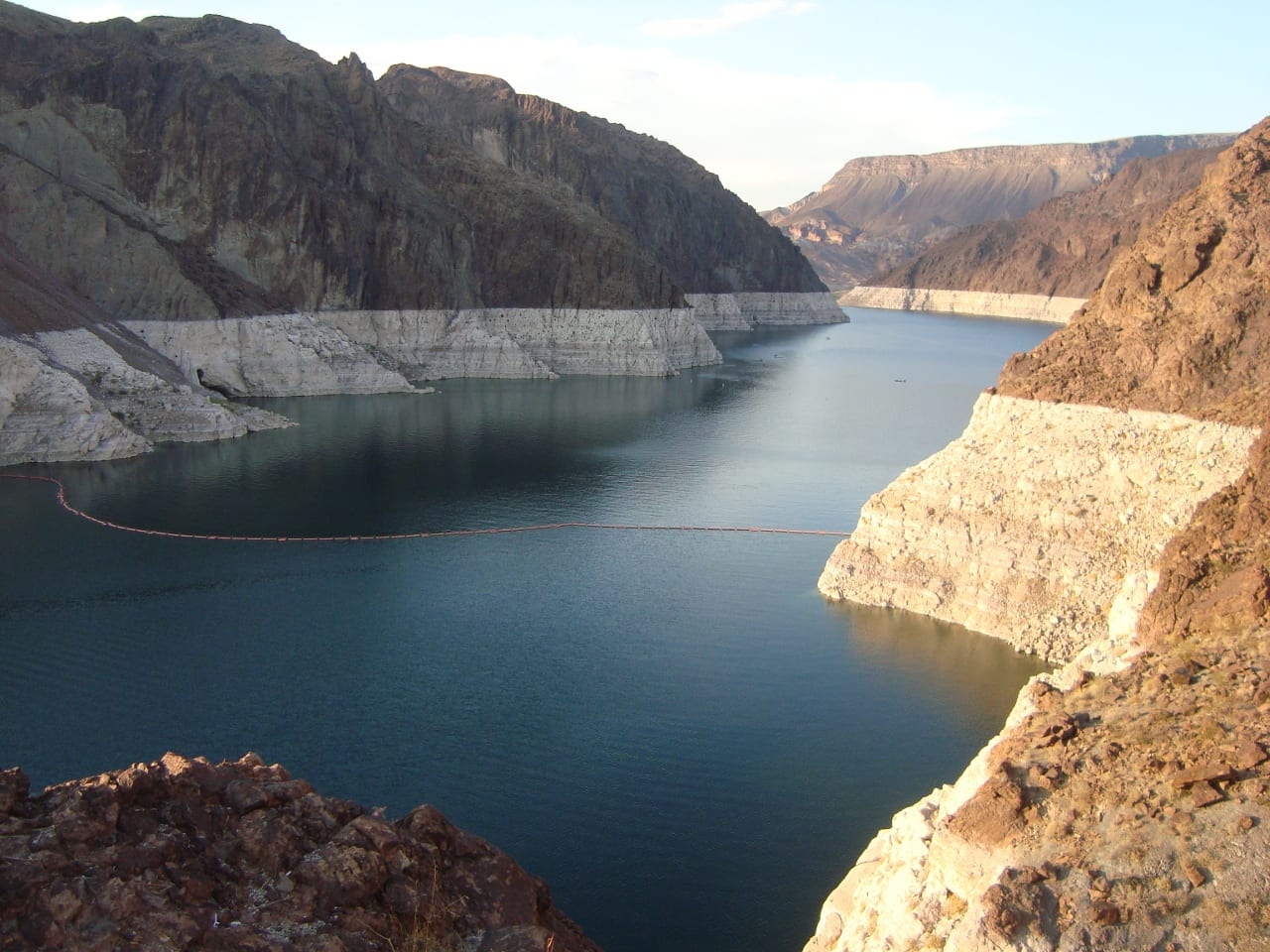A drought may be defined as the absence of significant precipitation (rain) for an extended period of time. Some areas are accustomed to longer periods without rain than others, therefore, whether or not a rainless period is considered a drought varies with location. Source.
Contents:
- Impact on Water Supply
- Impact on Crops/Agriculture
- Impact on Sanitation/Hygiene
- Fatalities
- Economic Impact
- Ecological Impact

If you didn’t already notice, the lightest coloured area on the rock just above the water level which is called a “bath tub line” is an indicator of how much the water level in the dam has decreased.
Evapotranspiration is simply the evaporation of water from soil and bodies of water, and the release of water vapour from the stomata of plants (transpiration). Please note that drought is not just the lack of precipitation over an extended period of time, but it is a longer than usual or lack of precipitation.
Some areas normally experience longer “normal” dry periods than others, so that may not be considered/perceived to be a drought as it would/may be in another geographic location with more precipitation. The perceived intensity of a drought of most people (not scientists) may be affected by the ratio of precipitation to water demand as well as the suitability of the water supply infrastructure (such as the number of water supply dams).
If water demand is low in a geographic location, precipitation could be low as well without causing major water supply shortages. On the other hand, precipitation may be high and water demand could be extremely high, and the effects of such a situation may be augmented by a lack of adequate water supply infrastructure.
Water is one of the most important resources available, and a drought can either be mild enough to cause inconveniences, such as an intermittent supply of water due to rationing (when the water supply company turns off the supply of water to some areas to conserve it), or a drought can be so severe that people literally become diseased and die due to little to no sanitation.
Impact on Water Supply
A drought can cause water supply shortages due to a lack of precipitation (rain). Rain is often a significant source of water for rivers, apart from melting glaciers. Rain supplies water to rivers which supply water to water dams. These shortages force water supply companies to ration water.
Water usage restrictions will also be imposed, preventing people from watering their lawns, washing their cars, and other tasks which are not a high priority so that everyone will have enough water for cooking, washing clothes and dishes, as well as personal hygiene, flushing and cooking.
Impact on Crops/Agriculture
All plants require water to survive, some require much more than others, and some require very little, unfortunately, many of them require an ample amount of water and will wither during significant droughts unless gardeners/farmers are able to obtain water elsewhere. Drought can also cause famine in some cases. Famine is widespread food scarcity which results in malnutrition.
Sanitation/Hygiene
Water is required to brush teeth, wash faces, wash hair, shower/soak, wash dishes, wash clothes, wash filters and fans, clean buildings, furniture, etc. All of the above is important to maintaining a sanitary body and environment, and last but not least, drinking water needs to be clean, otherwise the drinker may become ill.
The absence of a water supply prevents people from performing the tasks above, and can lead to serious problems such as the spread of diseases, tooth decay, halitosis, fungii, infections, etc. Some infections and diseases can lead to death. This is not entirely due to drought, but, more than 1 billion people, (1/6/16.7% of the world’s population) do not have access to drinkable water.
Do Droughts Kill?
In developing countries where people sometimes are unable to purchase food and either have to grow it themselves, live in very remote areas, or a similar situation, drought can cause fatalities because they prevent them from growing food.
Economic Impact
Droughts are sometimes so severe, that they cause severe freshwater shortages that create the need for an alternative source of water, such as the ocean, but seawater is saline (salty), polluted, and unsafe to drink. One economic consequence is that desalinated ocean water is 5 times more expensive than freshwater (in the U.S), and water is required by everyone for a variety of purposes, including personal hygiene, cleaning, flushing toilets, manufacturing, cooking, and drinking.
Another economic consequence is the fact that drought affected farmers are sometimes unable to farm because they don’t have any water, and if they cannot farm, then they cannot make any money. This also decreases food supply, and can result in increased food and drink prices. Example.
Pumping desalinated water far inland is a different story. One example of a large country which uses desalinated water is Australia, and their population is clustered along the coast possibly due to the fact that it is much more costly to pump desalinated water far inland. Water pumping requires electricity, and more electricity is required to pump water further distances.
I will try to to break it down even more to help you understand the effect of an increase in the price of food products:
If the cost of apples increased due to a drought, then the cost of all products containing apples would increase as well, such as apple juice, fruit juice mixtures, apple pies, apple tarts, apple cider vinegar, and anything else that contains apple or even requires an ingredient from apples to be manufactured, it does not actually have to contain apple.
About vinegar: This is used in almost all pepper sauces (look at the ingredients lists on pepper sauce bottles and is also used in salad dressings, which are in turn used to season savoury foods, which would also become more expensive because the sauce which restaurants and so on use to season them increased.
Another example:
If the cost of pepper increased due to drought, then the cost of everything that contains pepper would increase as a result of that, causing quite a ripple effect, therefore the cost of the most savoury products would increase, so that is a widespread problem which is felt by everyone.
Ecological Impact
Animals need freshwater to survive, and droughts can cause nearby water bodies to dry out, causing them to die of thirst. Scroll up to learn more about the effect of drought on agriculture and vegetation, because this has an impact on ecosystems.
Assuming that you read what I linked to above, the effect that drought has on vegetation affects animals because animals need the vegetation which droughts prevent from growing and sometimes kill, therefore herbivorous animals that rely on them starve and die. Another consequence of that is carnivorous animals which rely on the animals above as a source of food starve and die too.




